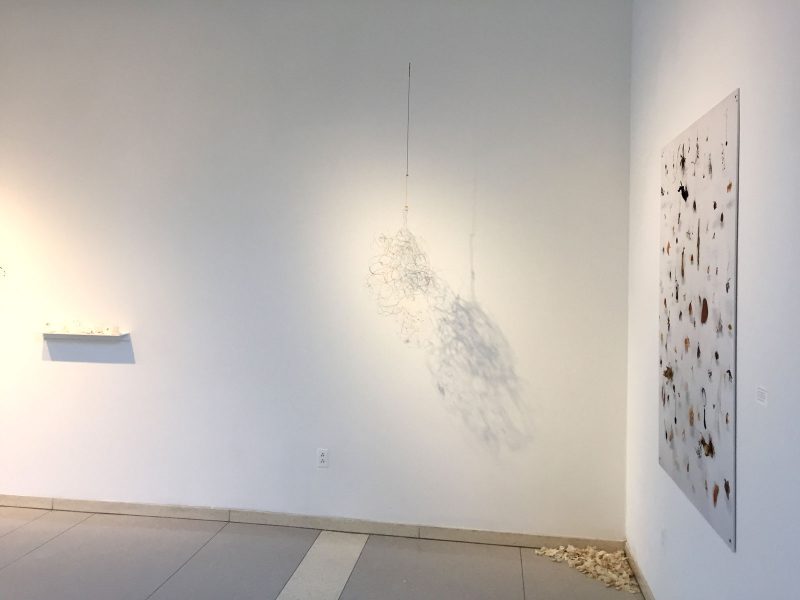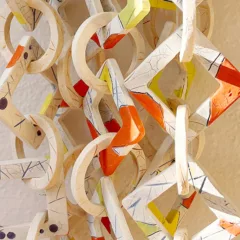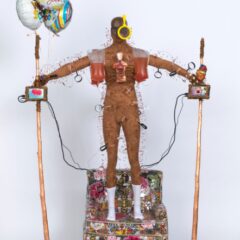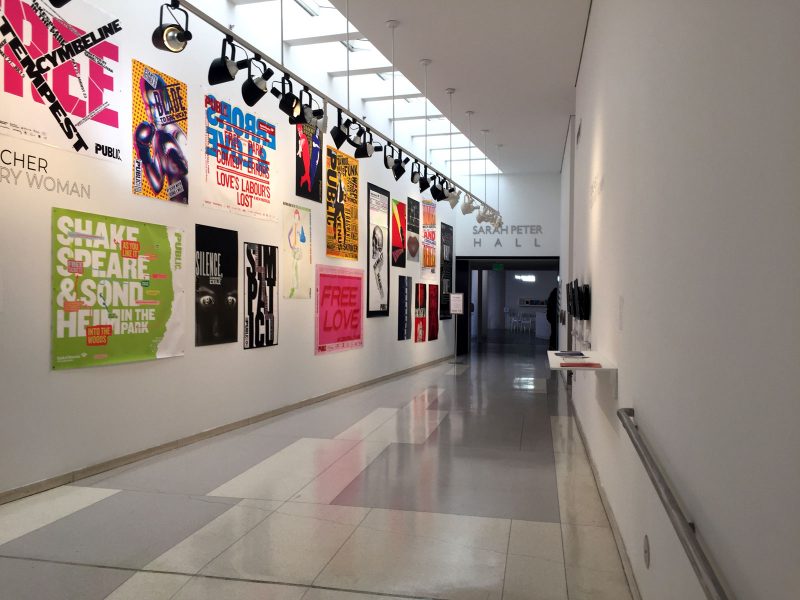
What does it mean to be called “visionary”? That is quite a label to live up to, and must be bestowed with the seriousness and consideration that the honor holds. The annual Visionary Women awards at Moore College of Art and Design are given only to those who truly embody that standard. This year, the awardees are Jill Bonovitz (artist), June Kelly (gallerist), and Paula Scher (graphic designer). The work on view at The Galleries at Moore speak to why each of these outstanding women are deservedly recognized.
Moore College was founded in 1848 as a visual arts college for women. It continues to be the only such undergrad institution in the United States. As someone who attended a women’s college (Smith), I understand the power of an education at such an institution, and was thrilled to see the Visionary Women exhibition, and celebrate a legacy of powerful women in the arts.
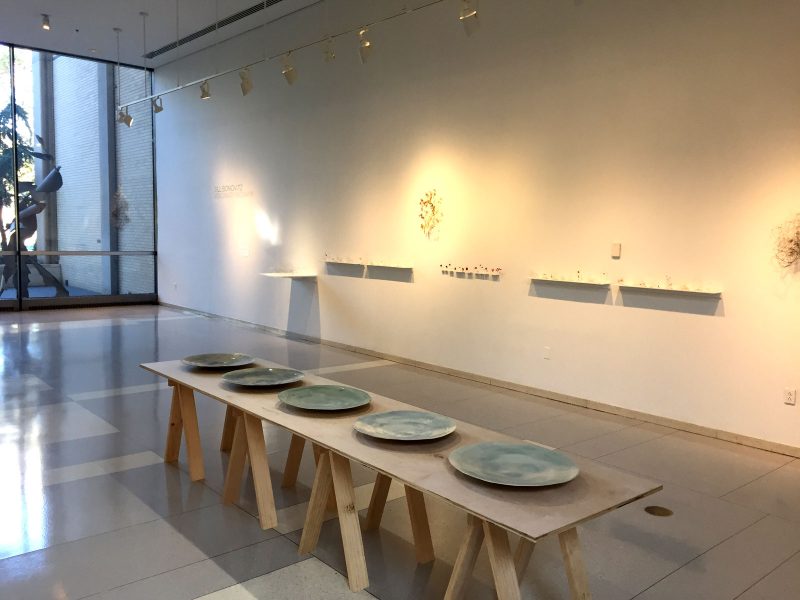
The show is divided into three portions, one for each awardee. Visitors first come to the work of Jill Bonovitz: an enchanting opening to the exhibition. Bonovitz (Moore class of 1974) says that “fragility is common to all [her] work,” a statement which encapsulates the range of work on view, including clay vessels, a photograph, and many wire works. I was most enthralled by the wire works: they have an electric delicacy to them, as though they radiate power or conduct energy. Many of them are small, almost floral in shape. The sculptures become a kind of 3D still life: elegant and somehow secretive. These wires seem to entangle a hidden story, even though you can see through them, and hold them in the palm of your hand. They are flirtatious, whimsical, at times creature-like with large personalities. Nearby these small wire pieces, a larger work rests on a shelf: it casts shadows all around, and has little colorful specks throughout. Yet another wire work hangs from the ceiling: a chandelier, a thought bubble, a cloud of fairy dust. In the far corner the materials change with a pile of petals that rests on the floor, like an installation by Félix González-Torres. In its entirety, Bonovitz’s section is elegant and playful, inviting close looking and introspection, as well as smiles–perhaps even giggles. Her craftswomanship is clear, and creativity shines through. After looking at her work, I wanted nothing more than to sit down to tea with her–I imagine her being an excellent conversationalist.
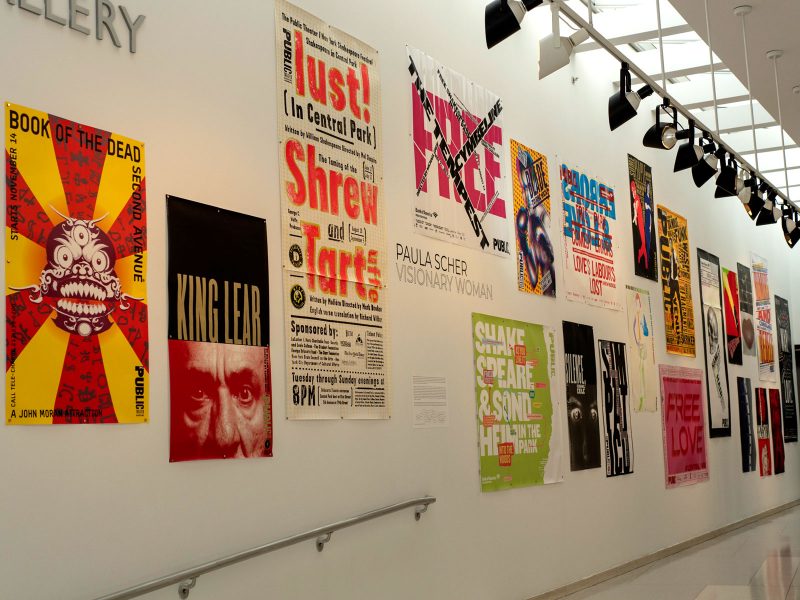
The other two sections of the exhibition – Kelly and Scher – are housed in a long hallway gallery, one woman on each side. I began with Scher. Paula Scher has been described as “the master conjurer of the instantly familiar.” This rather opaque statement begins to make sense when standing in front of the wall of posters on view at Moore. They are bold, colorful, and playful. Scher mixes a modern, clean graphic design, with classic content: her Shakespeare posters had me hooked (and not just because of my love of the bard). Scher’s works demonstrate intersections: mixing timelines (such as a single poster featuring Hamlet and Hair); text and image graphics (primarily she relies on text, arranging it geometrically, only occasionally using an image to drive her point home); and bright colors against clean backgrounds. Looking at the wall, I can just as easily imagine these on a subway platform or billboard, as an Instagram post or a webpage sidebar: they are multimodal. Scher does not get lost in the work, there is no faceless branding that is immune of her signature. Her style is evident, and powerful. She is a woman who will not be silenced. It is no wonder that she has worked for such a range of brands as MoMA, Tiffany & Co., The Met Opera, and Shake Shack.
Finally, you come to the legacy of June Kelly. As a gallerist, her section was the most challenging: what can one hang or show to communicate the work of this woman? Ephemera became the answer: exhibition cards, booklets, invites; three videos of interviews with people who know Kelly well (Moe Brooker, Sandra Lerner, and Cynthia Madelman). The material shows a focused career, a clear gallery focus, and an impressive body of work. Getting to know the artists and communicate their work in a way that feels accessible is clearly a priority for Kelly. Although this section is not nearly as visually punchy as Scher’s work, hung just a few yards away, Kelly still manages to hold her ground in the space, through the intense clarity embodied in each of the provided materials.
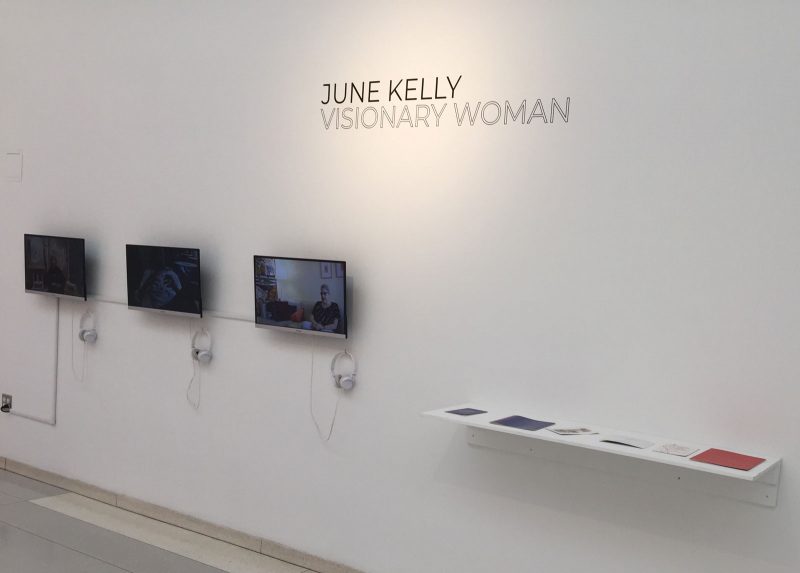
Jill Bonovitz, June Kelly, and Paula Scher: Visionary Women at Moore College is without a doubt a successful showcase of these three women’s work. Each section distills a career and personality into a manageable portion, without closing the conversation on what these women may achieve next. The sections are–for the most part–well-balanced and inviting to viewers, and are full of incredible content. Bonovitz, Kelly, and Scher–the visionary cohort of 2019–make for a wonderful trio, and a fabulous representative sample of what women offer the art world, and the world at large, today.
“Jill Bonovitz, June Kelly, and Paula Scher: Visionary Women,” The Galleries at Moore, Moore College of Art and Design, October 3 – November 16, 2019
More Photos

